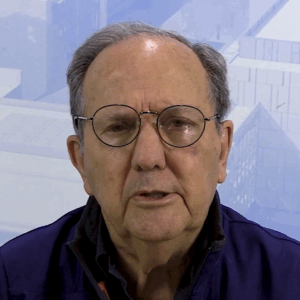
The Strategy Used in Velasquez Rodríguez v. Honduras by Juan Méndez
This is the second blog in a series featuring legal representatives and experts in the field of strategic litigation against torture discussing the strategic impact of cases catalogued in our Casebook I.
In this blog piece, Juan Méndez, one of the legal representatives of the disappeared persons’ families in the Velasquez Rodríguez v. Honduras case, and former UN Special Rapporteur on Torture, examines its most strategic features. Juan Méndez is also a Patron of REDRESS.
The Velasquez Rodríguez v. Honduras case remains the most widely cited of the Inter-American Court of Human Rights’ decisions and its pronouncements regarding State obligations in the face of the most serious human rights violations has been reaffirmed numerous times in the almost four decades that have followed.

Juan Méndez
Velasquez Rodríguez v. Honduras (IACtHR, July 29, 1988)
The complaints filed against Honduras for the human rights crime of forced disappearances of persons led to the first adversarial case (caso contencioso) heard by the Inter-American Court of Human Rights.
The Court had come into being in 1979, when the requisite number of ratifications operated the entry into effect of the American Convention of Human Rights. At first the Court only issued Advisory Opinions, since its adversarial jurisdiction requires that cases against member States of the Organization of American States be heard first by the Inter-American Commission on Human Rights, and be submitted to the Court only after the Commission processes the complaint and decides: first, that the State is internationally responsible for a violation of the treaty; and then to refer the case to the Court if the State does not implement the Commission’s recommendations regarding remedies.
It was highly significant that the first case to be decided by the Court should address the phenomenon of disappearances, since these clandestine and unacknowledged detentions by State actors had long been the most prevalent tool of repression used by military dictatorships and – as in Honduras – by military establishments that were an unaccountable power within weak elected governments.
Overcoming the deficient evidence in disappearance cases
Three cases with similar facts were litigated together, and after several hearings, Velasquez Rodriguez was the first to reach a decision on the merits. At that time the parties to the litigation were the Commission as plaintiff and the defendant State; in representation of the families of the disappeared persons, my colleagues and I were allowed to join the delegation of the Commission.
Since the evidence in disappearance cases is always notoriously deficient (as was also the fact-finding conducted by the Commission with complete lack of cooperation by the State), we persuaded the Commission – and the Court – to allow us to show a pattern of similar disappearances occurring in Honduras at that time, in a context in which the armed forces were collaborating with its neighbours and with the United States to suppress armed rebellions in Guatemala and El Salvador.
We presented testimonial and documentary evidence on the futility of habeas corpus proceedings, and a few witnesses who had survived the clandestine detention and had been released. One important witness was a defector of the armed forces who had fled the country after having been drafted into the secret units that conducted disappearances. He testified to the use of torture in clandestine detention centres and to the murder and eventual hiding of the remains of most disappeared victims.
The Court described in detail the phenomenon of disappearances, noting how it often includes incommunicado detention, torture, and other forms of inhuman treatment, and its harmful impact on the detainee’s physical and psychological integrity. The Court also pronounced enforced disappearance a crime against humanity in international law, with the legal effect that the State was obligated to investigate and reveal the truth about the fate of the disappeared (right to truth), to prosecute and punish those responsible (right to justice) overcoming any de facto or de jure obstacles; and to offer reparations to the families.
Regarding all these obligations, the State was subject to a standard of ‘due diligence,’ meaning that they should be carried out in good faith and to the maximum use of all resources at the State’s disposal. The Court also ordered payment of reparations to the families, and in a subsequent interpretive decision commanded that, until complete payment, the State was bound to preserve the value of the judgment by reference to a hard currency.
Velasquez Rodriguez has remained the most widely cited of the Inter-American Court’s decisions and its pronouncements regarding State obligations in the face of the most serious human rights violations has been reaffirmed numerous times in the almost four decades that have followed.
Casebook Series
The REDRESS Casebook series showcases around 80 case studies of strategic litigation against torture from around the world to illustrate best practices to help strengthen the capacity of human rights lawyers worldwide. It was produced with financial assistance from the EU under the United Against Torture Consortium initiative.
- Seeking Justice: Two Decades of Fighting Impunity for Enforced Disappearances in the North Caucasus by Elba Bendo
- Breaking the Chains: How El-Sharkawi’s Case Exposes Egypt’s Systemic Repression by Natasha Arnpreister and James Goldston
- First Attempt to Apply Universal Jurisdiction to Algeria’s Dirty War: The Khaled Nezzar case in Sqitzerland by Benoit Meystre
- Gäfgen before the European Court of Human Rights: The ‘German Torture’ Case by Lutz Oette
